Carpal tunnel syndrome affects 3-6% of adults in the general population, which is a staggeringly high percentage. Carpal tunnel syndrome can get worse if left untreated. It could result in long-lasting harm, such as finger numbness and weakening. Historically, corticosteroids and surgery have been used to treat carpal tunnel syndrome. Although unsuitable for everyone, these therapies frequently discourage people from obtaining medical care. In this post, we’ll talk about acupressure for carpal tunnel syndrome and how this pressure points stimulation can help with the discomfort and symptoms that the condition causes.
What Is Carpel Tunnel Syndrome?
Compression of this median nerve results in the repetitive strain injury (RSI) condition known as carpal tunnel syndrome, which affects the hand and forearm. Your carpal bones, which are found on the underside of your wrist, and the transverse carpal ligament, which spans the top of the wrist, combine to produce the carpal tunnel. Your median nerve passes through the opening made as a result. One of the primary nerves that supply the hand is the median nerve. When pressed, it might make the affected arm feel numb, tingly, and painful. Since many people sleep with their wrists bent, nighttime symptoms are particularly prevalent. This might aggravate their median nerve even more.
The median nerve may become compressed if the tunnel becomes congested or the synovium, the tissue around your flexor tendons, swells and reduces blood flow. Additionally, research has revealed that women are three times more likely than males to experience carpal tunnel syndrome, frequently striking people in their 40s and 50s. Your doctor may request blood tests, a nerve conduction study, an electromyogram, ultrasound, x-ray, or MRI scan to determine if you or they suspect you have carpal tunnel syndrome. An acupressure mat for carpal tunnels is an effective way to get rid of symptoms of carpel tunnel syndrome.
Carpel Tunnel Pressure Points:
Accupressure can assist in reducing swelling and inflammation and stimulate your body to mend the affected area, hence it can be an excellent treatment for easing the symptoms of carpal tunnel syndrome. Although our bodies are highly adept at self-healing, there may occasionally be a roadblock that necessitates outside assistance. Acupuncture points for carpel tunnel can help in this situation.
1. Pericardium 6 (PC 6 or P 6) — Neiguan or Inner Frontier Gate
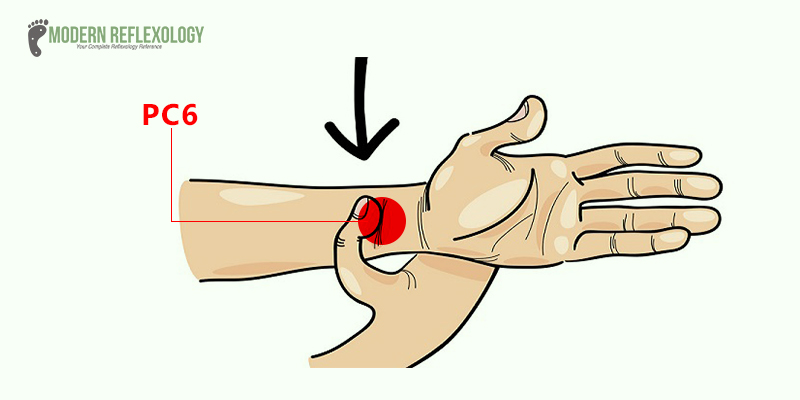
The PC 6 pressure point is on the inner side of your forearm and wrist, three finger widths from the wrist crease. You can treat carpal tunnel syndrome by pressing on this region and activating it. However, the PC 6 pressure point can also cause indigestion, motion sickness, insomnia, anxiety, nausea, and stomach discomfort. This is one of the most effective points of acupressure for carpal tunnel syndrome.
2. Pericardium 7 (PC 7 or P 7) — Daling or Great Hill:
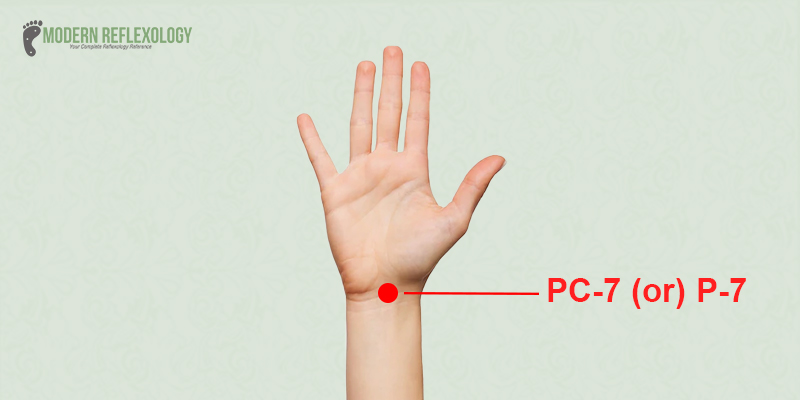
Between the tendons of the flexor carpi radialis and palmaris longus, at the middle of the transverse crease of the wrist, is the PC 7 pressure point. This specific pressure point can be stimulated to ease not just carpal tunnel syndrome but also heart, chest, and hypochondrium discomfort, palpitations, nausea, vomiting, and pain in the heel. Additionally, it has a history of effectively easing manic psychotic symptoms.
3. Pericardium 8 (PC 8 or P 8) — Laogong or Labor Palace:
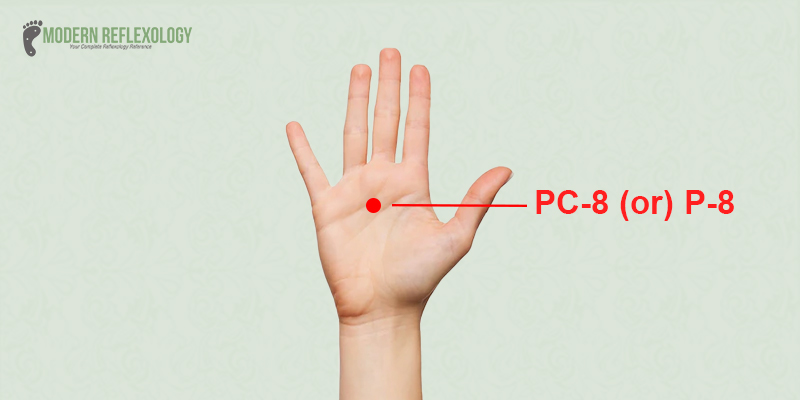
Your palm’s center contains the PC 8 pressure point. Utilizing the same fist-like motion with your middle finger, you can locate it. The PC 8 pressure point is located where the tip of your finger meets your palm. Carpal tunnel syndrome symptoms can be relieved by gently stimulating this pressure point with the thumb of your opposite hand. However, if you’re expecting, use caution as this acupressure for carpal tunnel syndrome might hasten labor if you’re pregnant.
4. Heart 7 (HT 7) — Shenmen or Spirit Gate:
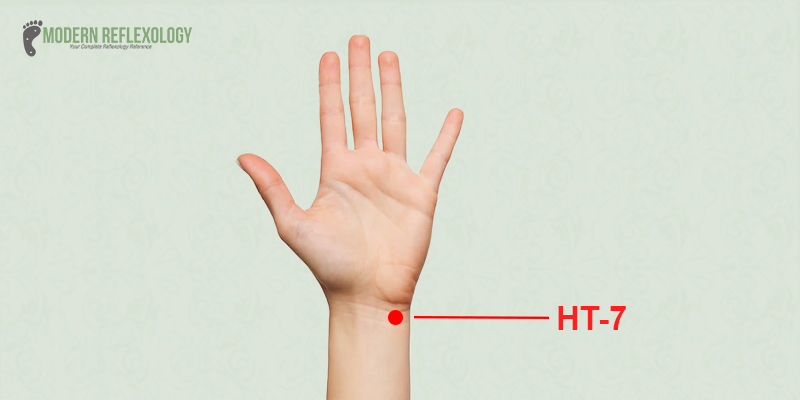
By tracing your pinkie finger down to the dip in the inner wrist crease, you can locate the HT 7 pressure point. Applying pressure to this region can eliminate the signs of carpal tunnel, insomnia, anxiety, and stress. This particular acupressure point also alleviates irritation and heart palpitations.
5. Heart 8 (HT 8) — Shaofu or Lesser Mansion:
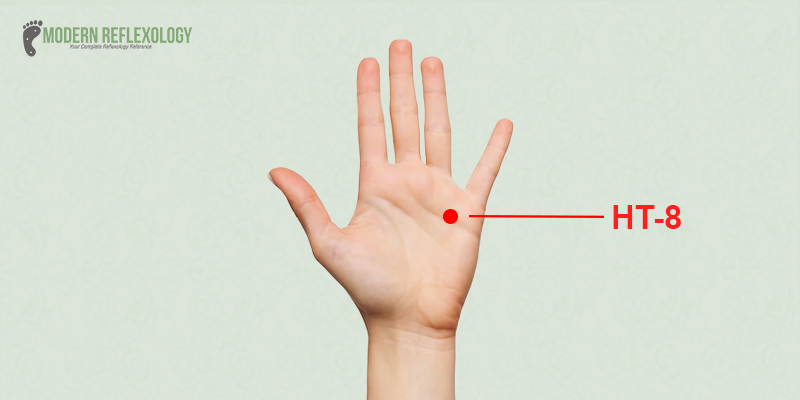
The HT 8 pressure point is on your palm, between the fourth and fifth metacarpal bones. Making a fist will help you locate it more quickly; the acupressure point is where the tip of your little finger hits. This pressure point can reduce palpitations, chest pain, and spasmodic pain in your pinkie, as well as symptoms of carpal tunnel syndrome. It calms the Shen and eliminates surplus Heat from the small intestine and heart.
6. Lung 8 (LU 8) — Jingqu or Channel Canal:
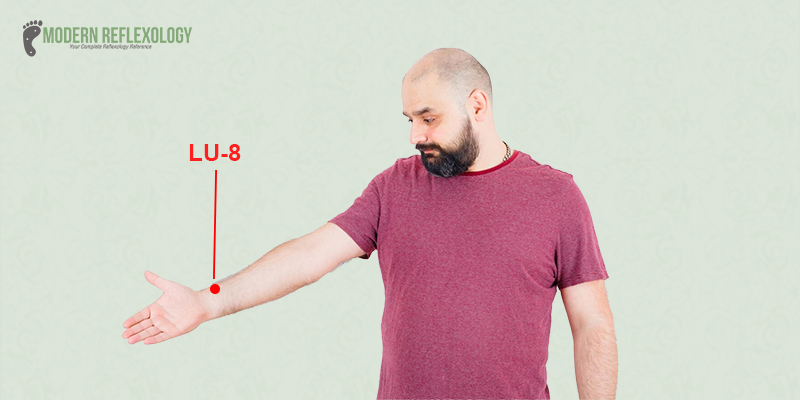
The LU 8 pressure point is located on the radial palmar aspect of your forearm, between the styloid process of the radius and radial artery. It is situated 1 cun (or roughly 1 finger width) above the wrist’s transverse crease. Applying pressure to this acupoint can help with carpal tunnel syndrome, wrist pain symptoms, coughs and asthma, chest pain, and sore throats. This is one of the best acupressure points for carpal tunnels.
7. Lung 9 (LU 9) — Taiyuan or Great Abyss:
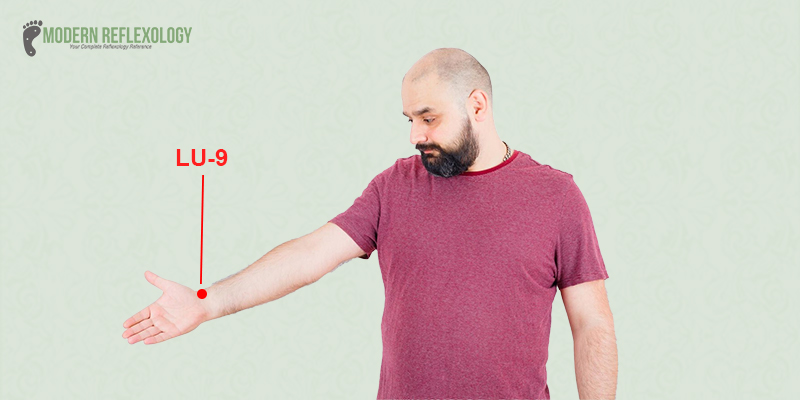
The LU 9 pressure point is located on the inside wrist crease. You can find it by tracing your thumb from your wrist downward. Stimulating this point can ease the symptoms of carpal tunnel syndrome, wrist pain, sinus infections, colds, headaches, and asthmatic coughs. It can also alleviate anxiety and heart palpitations.
8. Lung 10 (LU 10) — Yuji or Fish Border:
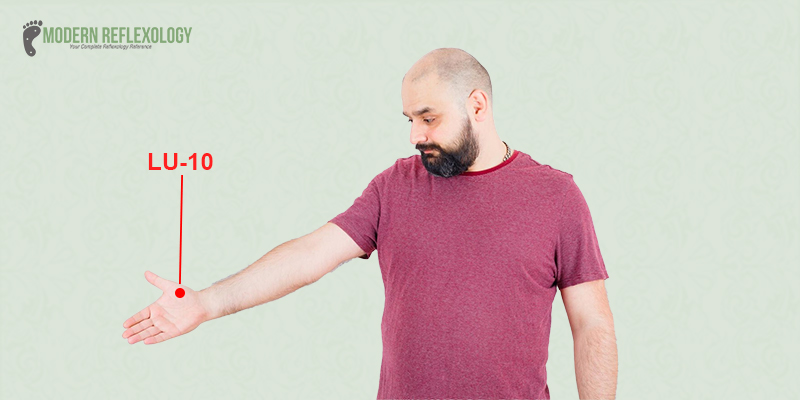
The LU 10 pressure point is in the depression behind the thumb’s thenar eminence, roughly in the middle of the palmar side of the thumb, where the red and white skin meet. By pressing on this pressure point, you can treat several chest-related conditions, including carpal tunnel syndrome. These include hemoptysis or coughing up blood, asthma, sore throat and hoarseness, and fever. This is one of the most reliable acupressure points for carpal tunnel pain and is known to produce effective relief.
9. Triple Warmer 5 (TE 5, TH 5, or TB 5) — Waiguan or Outer Pass:
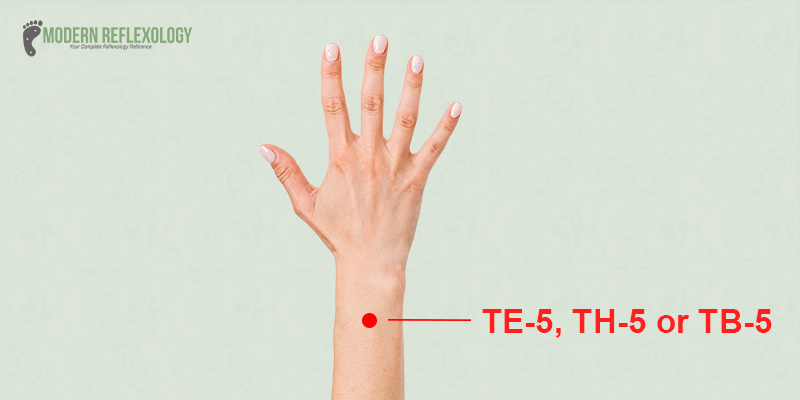
The TE 5 pressure point is situated on the back of the wrist or the outer side of the forearm, two finger widths from the wrist crease. Pain in the elbow, forearm, wrists, and hands are all symptoms of carpal tunnel syndrome that can be relieved by applying pressure to this specific location. Additionally, it has a reputation for easing neck pain, stiffness, migraines, and headaches.
10. Large Intestine 10 (LI 10) — Shousanli or Arm Three Miles:
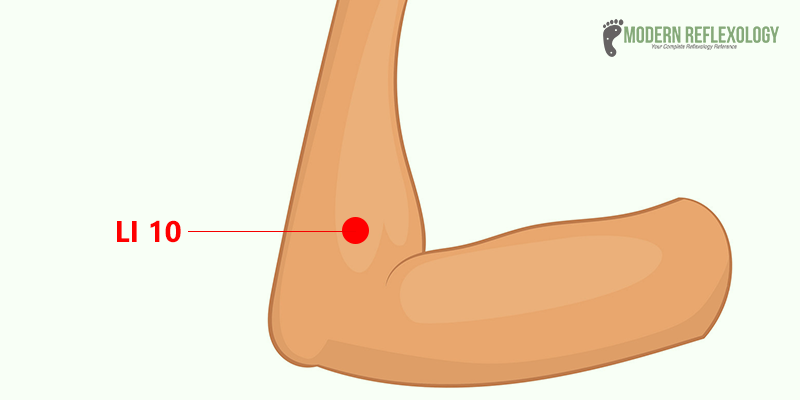
When you bend your arm 90 degrees, the LI 10 is located outside your forearm, three finger widths below your elbow crease. You can relieve toothaches, cheek swelling, and carpal tunnel syndrome symptoms by pressing on this area. Acupressure can also treat various other problems and ailments, such as diarrhea, back and shoulder pain, motor problems, and upper limb disability.
Final Words:
In summary, using pressure points effectively can help you manage the discomfort and agony of carpal tunnel syndrome (CTS). Due to the prevalence of CTS and its potential negative effects on a person’s quality of life, it is crucial to investigate all available treatment options. People with CTS can get relief from symptoms, including tingling, numbness, and pain, by gently pressing on certain spots, such as those in the wrist, hand, and forearm. Acupressure points for carpal tunnel syndrome can be an effective way to get rid of discomfort caused by carpel tunnel syndrome.
Although pressure point therapy may not be a permanent solution for CTS, it can be a valuable adjunct to conventional medical care and behavioral changes. Regular self-massage and pressure point exercises can ease muscular tension, enhance blood flow, and lessen compression on the median nerve—all of which are essential for treating CTS symptoms.

Comments are closed